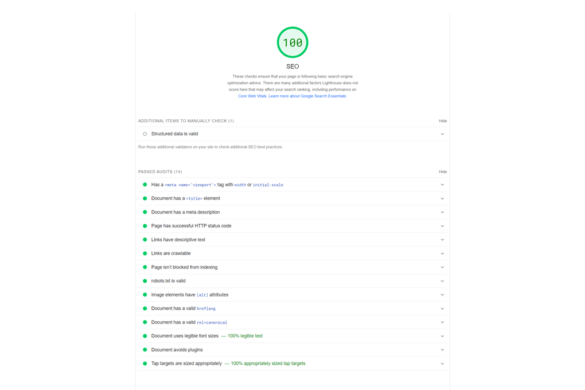Table of Contents
SEO and copywriting are two critical components of any successful digital marketing strategy. While they may seem like separate entities, they actually go hand in hand. In fact, without proper SEO, even the best copywriting may go unnoticed by potential customers.
Effective copywriting is all about creating content that engages and resonates with your target audience. But what good is great content if nobody can find it? This is where SEO comes in. By optimizing your content for search engines, you can ensure that it is visible to the right people at the right time.
How SEO and Copywriting Work Together
Understanding the Interplay
SEO and copywriting are two essential components of digital marketing that work together to ensure a website’s success. SEO is the process of optimizing a website for search engines, while copywriting is the art of creating compelling and engaging content. The interplay between these two elements is crucial to the success of any website.
Effective copywriting is useless if it cannot be found by search engines. Conversely, SEO is incomplete without compelling content. The two work together to create a website that is not only visible to search engines but also engages and converts visitors.
Benefits of Combining SEO and Copywriting
Combining SEO and copywriting has numerous benefits. First, it ensures that the website’s content is optimized for search engines, making it easier for potential customers to find. Second, it ensures that the content is engaging and compelling, keeping visitors on the website longer and increasing the chances of conversion.
Moreover, combining SEO and copywriting helps to create a consistent brand voice across all digital platforms. It ensures that the website’s content is aligned with the brand’s messaging and values, making it easier for customers to connect with the brand.
Fundamentals of SEO in Copywriting
Keyword Research and Selection
One of the primary goals of SEO in copywriting is to identify and target the right keywords. Keyword research helps copywriters to understand the language and phrases that their target audience uses when searching for information related to a particular topic. By selecting the right keywords, copywriters can optimize their content for search engines and increase the chances of their content appearing on the first page of search results.
To conduct keyword research, copywriters can use a variety of tools, including Google Keyword Planner, Ahrefs, and SEMrush. These tools provide valuable insights into the search volume, competition, and relevance of different keywords. Copywriters should aim to select keywords that have a high search volume and low competition, as these are more likely to drive traffic to their content.
On-Page SEO Elements
In addition to keyword research, copywriters must also optimize their content for on-page SEO elements. On-page SEO refers to the factors that influence the visibility and ranking of a webpage on search engine results pages (SERPs). These factors include the title tag, meta description, header tags, and content.
Copywriters should ensure that their title tag and meta description accurately reflect the content of their page and contain relevant keywords. Header tags (H1, H2, H3, etc.) should be used to structure the content and make it easier for both search engines and users to understand. Additionally, copywriters should aim to include relevant keywords in the content of their page, while ensuring that the content remains high-quality and engaging.
User Intent and Content Relevance
Finally, copywriters must consider the user intent and relevance of their content when optimizing for SEO. User intent refers to the reason behind a user’s search query, and copywriters must ensure that their content satisfies this intent. For example, if a user is searching for “best pizza places in New York City,” they are likely looking for a list of recommendations, rather than a recipe for pizza dough.
Copywriters must also ensure that their content is relevant and valuable to their target audience. This means creating content that is informative, engaging, and addresses the needs and interests of their readers. By creating high-quality content that satisfies user intent and is optimized for SEO, copywriters can increase the visibility and reach of their content, driving more traffic and engagement to their website.
Copywriting Techniques for SEO
When it comes to SEO, copywriting is an essential component. By using effective copywriting techniques, you can improve your website’s visibility and attract more traffic from search engines. In this section, we’ll explore some of the most important copywriting techniques for SEO.
Writing Compelling Meta Descriptions
Meta descriptions are the short snippets of text that appear below your website’s title in search engine results. They provide a brief summary of what your page is about and can have a significant impact on whether or not people click through to your site. To write a compelling meta description, you should:
- Keep it short and sweet (around 155 characters)
- Use your target keyword(s) naturally
- Highlight the benefits of your content
- Include a call-to-action (e.g. “Learn more” or “Download now”)
By following these guidelines, you can create meta descriptions that entice users to click through to your site.
Crafting Engaging Headlines
Headlines are the first thing that people see when they come across your content, whether it’s in search results, social media, or elsewhere. As such, they need to be attention-grabbing and compelling. To craft engaging headlines, you should:
- Use numbers and statistics to make your headline more specific
- Use power words to create an emotional response (e.g. “amazing,” “unbelievable,” “essential”)
- Use questions to pique readers’ curiosity
- Keep it short and sweet (around 60 characters)
By using these techniques, you can create headlines that capture readers’ attention and encourage them to click through to your content.
Creating Valuable and Shareable Content
Ultimately, the most important copywriting technique for SEO is to create valuable and shareable content. This means creating content that provides real value to your target audience and is worth sharing with others. To create valuable and shareable content, you should:
- Focus on your audience’s needs and interests
- Provide actionable advice and insights
- Use visuals (e.g. images, videos, infographics) to enhance your content
- Make it easy to share (e.g. include social sharing buttons)
By creating content that people find valuable and want to share, you can attract more traffic to your site and improve your search engine rankings.
Measuring the Impact of SEO Copywriting
SEO copywriting is a critical aspect of digital marketing, and measuring its impact is essential to determine its effectiveness. By tracking analytics and performance metrics, conversion rates, and conducting content audits, marketers can evaluate the success of their SEO copywriting efforts.
Analytics and Performance Metrics
Measuring the impact of SEO copywriting involves tracking website traffic, bounce rates, time on site, and other performance metrics. Google Analytics is a popular tool that provides detailed insights into website traffic and user behavior. By analyzing the data provided by Google Analytics, marketers can determine which pages are performing well and which ones need improvement.
Conversion Rate Optimization
Conversion rate optimization (CRO) is the process of improving the percentage of website visitors who take a desired action, such as making a purchase or filling out a form. By conducting A/B tests and analyzing user behavior, marketers can optimize their website’s conversion rate. SEO copywriting plays a crucial role in CRO, as it helps to attract high-quality traffic to the website and persuade visitors to take action.
Content Auditing for SEO Improvement
Conducting regular content audits is essential to ensure that the website’s content is up-to-date, relevant, and optimized for search engines. By analyzing the website’s content, marketers can identify areas that need improvement and develop a plan to optimize it for search engines. This includes optimizing meta descriptions, title tags, and header tags, as well as ensuring that the content is keyword-rich and relevant to the target audience.
Challenges and Best Practices
Avoiding Keyword Stuffing
One of the biggest challenges in SEO copywriting is avoiding keyword stuffing. This is the practice of overusing keywords in an attempt to manipulate search engine rankings. While it may have worked in the past, search engines are now smarter and can detect when content is overstuffed with keywords. This can result in penalties and lower rankings.
To avoid keyword stuffing, it is important to conduct thorough keyword research and use keywords naturally throughout the content. It is also important to focus on creating high-quality content that is useful and engaging for the reader.
Balancing Creativity with SEO
Another challenge in SEO copywriting is balancing creativity with SEO. While it is important to optimize content for search engines, it is also important to create content that is unique, engaging, and memorable for the reader.
One way to balance creativity with SEO is to focus on creating content that is valuable and informative for the reader. This can include using storytelling, humor, and other creative elements to make the content more engaging.
Staying Updated with SEO Trends
SEO is constantly evolving, with new trends and best practices emerging all the time. To be successful in SEO copywriting, it is important to stay up-to-date with the latest trends and best practices. This can include attending industry conferences, reading industry blogs and publications, and networking with other professionals in the field.
In addition, it is important to continually monitor and analyze the performance of content to identify areas for improvement and optimize for better results. This can include tracking metrics such as traffic, engagement, and conversions, and making adjustments as needed to improve performance.
The Future of SEO and Copywriting
Voice Search Optimization
As more people use voice search to find information, businesses will need to optimize their content for voice queries. Voice search optimization involves understanding how people phrase their questions when speaking, as opposed to typing. This means using long-tail keywords and natural language that mimics how people speak.
In addition, businesses will need to ensure their website is optimized for voice search. This includes having a mobile-friendly website, using structured data, and having a fast-loading website. By optimizing for voice search, businesses can improve their chances of appearing in voice search results and reaching a wider audience.
Artificial Intelligence in Content Creation
Artificial intelligence (AI) is already being used in content creation, and this trend is likely to continue in the future. AI can be used to generate content, such as news articles and product descriptions, by analyzing data and creating templates. This can save time and resources for businesses, but it’s important to ensure that the content is still high-quality and valuable to the reader.
AI can also be used to personalize content for individual users. By analyzing data on a user’s behavior and preferences, businesses can create content that is tailored to their interests and needs. This can improve the user experience and increase engagement with the content.
Overall, the future of SEO and copywriting will involve a greater emphasis on user experience and personalization. By understanding how people search for information and creating content that meets their needs, businesses can improve their chances of appearing in search results and reaching a wider audience.







Add your first comment to this post